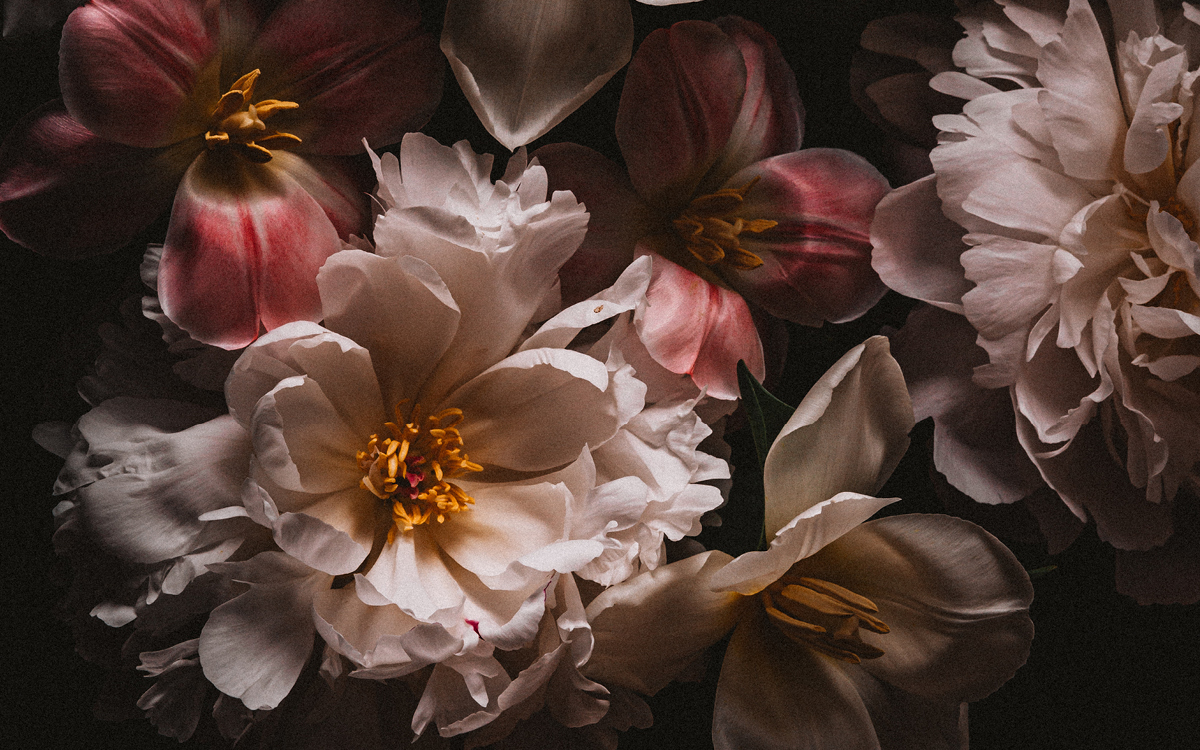
By Rebekah Giambroni
hile art, poetry, and dance are well-known forms of expression, many are unaware of a unique language spoken through flowers. Floriography, or the language of flowers, emerged during the Victorian era when it was considered improper to openly discuss and display one’s emotions. Taking their meanings from mythology, religion, the shapes of the flowers, and occasionally their own imaginations, florists gave the prudish Victorians a clandestine way to express their feelings. Women of the era eagerly embraced the practice, wearing solitary blooms or small arrangements in their hair or on their clothes that indicated their love or loathing, solidarity or sorrow.
It is no surprise that love is the largest category for floral symbology. The most obvious of the blooms meaning love is the rose. The love you wished to express depended on the color you gave. A white rose was for innocent love, pink was for blossoming romance, and deep red for passion. Other flowers that also indicate love are the tulip, which is intended to be used when first declaring one’s love for another; orange blossom, which was popular at Victorian weddings as a symbol of eternal love; and dogwood, which due to its hardy wood, symbolizes a strong love that will overcome adversity.
Beyond the category of love. Zinnias are a symbol of everlasting friendship and were a common gift for a friend leaving on a trip to say that they would be missed. It could be paired with pansies for a friend you thought of often or eucalyptus to strengthen the bond of your friendship. A gift for the hostess of a party is the sweet pea, which shows appreciation for a lovely time. You may need to rethink gifting that budding chef some basil; while delicious, it signifies hate. Likewise, though lavender is beautiful and gives off a lovely fragrance, it means distrust. Finally, the magnolia represents dignity as it grows tall and strong despite scorching summer heat – much like a good Southern lady!
While a solitary flower could impart a singular thought, giving a bouquet would be akin to writing a sonnet. Each flower contributes to a greater and deeper meaning. For a wedding you might pair red roses for love, ivy for fidelity, myrtle for hope, and dahlia for eternal commitment. If someone you know might be grieving, a bouquet to give your sympathies might include: chrysanthemum for condolences, marigold for grief, cypress for mourning, and lily of the valley to say that brighter days are ahead. Have you wronged someone? Hyacinth asks forgiveness; bluebell indicates humility; and an olive branch begs peace.
Many of these meanings carry on to this day, though many florists no longer follow the practice. According to florist Debbie Tindall at Blossoms Fine Flowers in Shreveport, “It used to be all about the meanings and colors, but around 20 years ago, it seemed to fall by the wayside. It started to matter less to people. I do wish that the practice would make a comeback.”
Let’s allow floriography to bloom once more! In those moments when words fail you, just let the flowers do all the talking.

